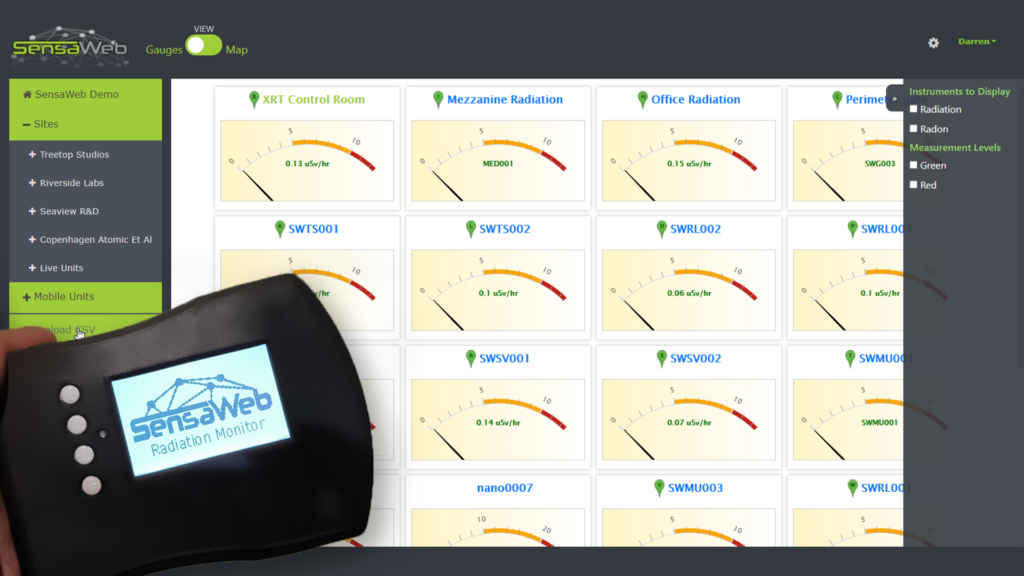When an object is said to expose us to radiation, it sounds like a danger to our health, but let’s get some facts straight.
Not all radiation exposure is harmful. We are constantly exposed to it from the various sources in our environment—cosmic radiation, radon gas, and the X-rays and CT scans we take. The amount we are exposed to is typically very low and is generally safe.
However, it is still critical to take appropriate precautions, such as radiation monitoring, wearing protective equipment during medical imaging tests and testing our homes for radon. Another way is to get informed about radiation and its effects, so let’s check out some of the myths and misconceptions about radiation exposure.
Myth: Irradiated food is radioactive and dangerous.
Fact: Irradiation doesn’t make food dangerous. It kills the real danger: bacteria. It saves people from bacterial infections like those caused by E. coli and Listeria.

Irradiation also extends the shelf life of foods like fruits and vegetables and allows long distance shipping for spices and grains. If you see food in the supermarket labelled with that green symbol called Radura. It means that it was irradiated and definitely safe.
Myth: Radiation exposure causes immediate symptoms.
Fact: The usual amounts of radiation we’re exposed to do not cause immediate symptoms.

Even higher doses of radiation could take hours or days to cause symptoms like nausea, headache and fever. Only extreme cases would be immediately fatal but nonetheless can be prevented through a proactive approach of monitoring and using protective equipment. If you have been exposed to high levels of radiation, you should seek medical attention immediately.
Myth: Lead shields can protect you from all radiation types.
Fact: Lead is most effective on ionising radiation like gamma and X-rays, not high energy Beta particle radiation.

While lead is dense and absorbs high-energy particles, it is less effective on beta and neutron radiation. Its ability also depends on its thickness and it can be hard to work with because of its weight. That’s why it’s recommended to be used alongside other preventive measures like practising ALARA (As Low as Reasonably Achievable). Limit exposure time and maintain a safe distance from the radiation source.
Myth: Nuclear power plants emit dangerous amounts of radiation to the surrounding community.
Fact: As long as the facility is in compliance with safety regulations, living near a nuclear power plant is safe.

According to the US Nuclear Regulatory Commission, if a person is living within 50 miles of a nuclear power plant, they will only receive an average radiation dose of 0.01 millirem per year. Compared to the average exposure of 300 millirem (3 mSv) per year from natural background radiation, this dose is extremely low.
However, while it is generally safe, authorities must understand public safety concerns and should meet these with collecting radiation data and informing and ensuring the community of their safety.
Myth: Most radiation we are exposed to is man-made.
Fact: On average, we are exposed more to natural radiation than man-made radiation.

According to the United Nations Scientific Committee on the Effects of Atomic Radiation (UNSCEAR), the majority of the average annual dose of natural radiation exposure for a person comes from radon gas—1.2 mSv of the average 2.4 millisieverts (mSv) per year. Other natural sources of radiation such as cosmic radiation from air travel contribute to the remaining dose.
In comparison, man-made sources of radiation contribute about 0.6 mSv per year to the average person’s radiation exposure. This includes sources such as medical imaging procedures like X-rays and CT scans.
Raising Radiation Safety Awareness through Radiation Monitoring
These are just some of the misconceptions on radiation exposure, which can lead people to either underestimate or overestimate the effects on our health. That’s why clear and effective communication within communities is important. With simplified data, the public will get answers to their common concerns and will help them further understand the measures to be taken.

Radiation monitoring is an important tool for protecting public health and safety, and it is important for everyone to be aware of the risks associated with radiation exposure and to take steps to minimise their exposure whenever possible.
Looking for area radiation monitors or personal radiation monitoring devices? You can count on SensaWeb. With our monitors, you can easily detect and interdict radioactive materials.
Connect with us here or at our email address: info@sensaweb.com.au. You can also call us at +61 415 409 467.